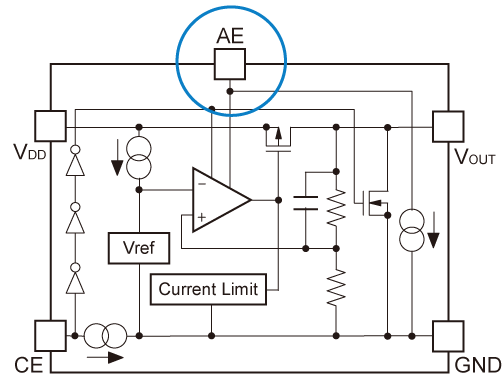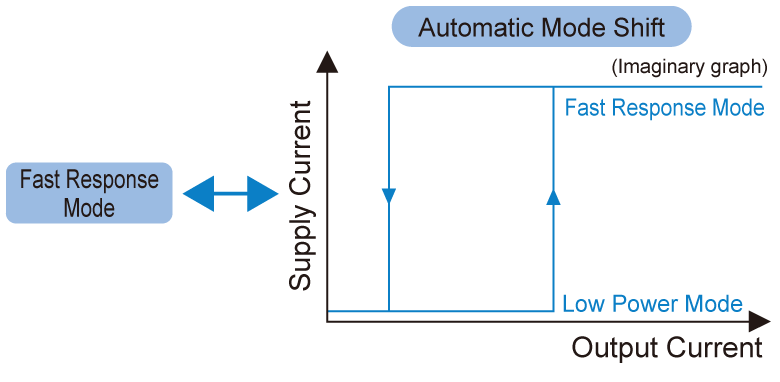What is an ECO function?
LDO Linear RegulatorsFunction
-
An ECO Function is a function which implements a High-performance Type LDO Regulator and a Low Supply Current Type LDO Regulator integrated in a single chip.
Having this ECO function enables a performance of three operating modes instead of only two; On mode, Off mode, and Sleep mode.The LDO regulator with ECO function is able to switch between a fast response mode (high-performance) and a low power mode (low supply current), additionally it can be switched to the Off mode by the CE pin. The LDO regulator with ECO function is able to reduce the supply current and number of parts on the board space since it switches between those modes depending on the device status.
-
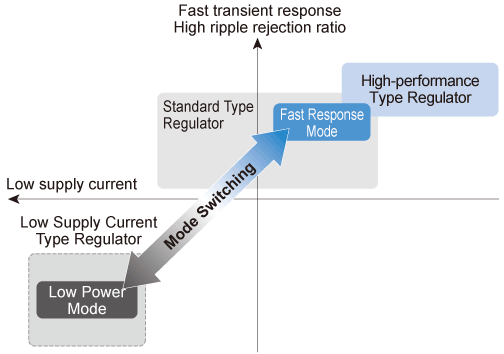
Comparison of Supply Current
The examples of the supply current of a Low Supply Current Type LDO Regulator, a LDO Regulator with ECO Function, and a High-performance Type LDO Regulator are shown in below table.
Comparison of Ripple Rejection Ratio
The ripple rejection ratio graph of a Low Supply Current Type LDO Regulator, a LDO Regulator with ECO Function and High-performance Type LDO Regulator. (Since the measurement conditions may be slightly different, please consider below graphs as a reference.)
-
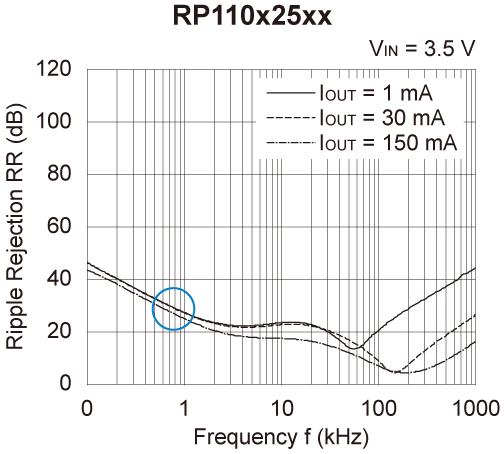
Low Supply Current Type
-
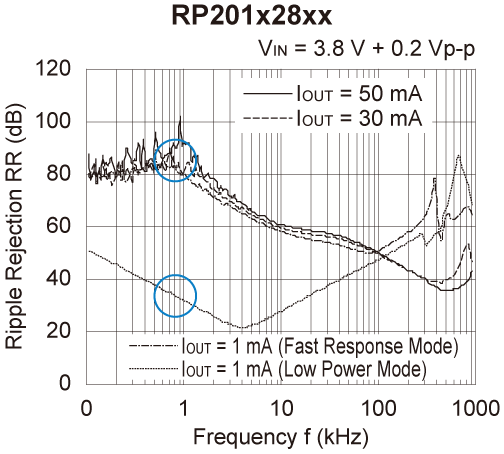
ECO Function Included
-
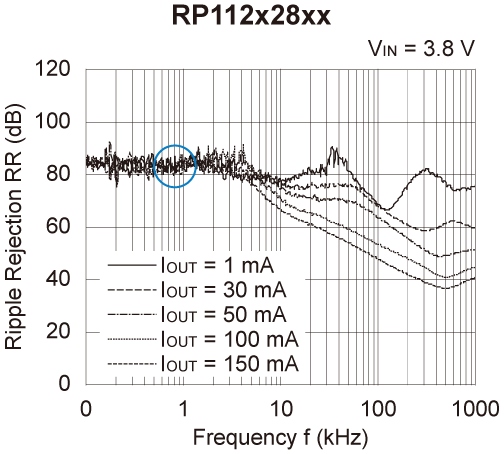
High-performance Type
Comparison of Load Transient Response
The load transient response graph of a Low Supply Current Type LDO Regulator, a LDO Regulator with ECO Function and High-performance Type LDO Regulator. (Since the measurement conditions may be slightly different, please consider below graphs as a reference)
Please note that the scale of the horizontal-axis for Low Supply Current Type and a Low Power Mode are in "ms", while those of a High-performance Type and a Fast Response Mode are in "µs", the load transient response is more than 100 times faster and output voltage variations are suppressed to 1/10.
-
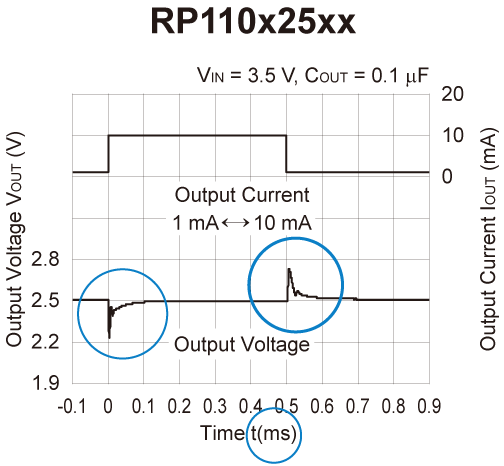
Low Supply Current Type
-
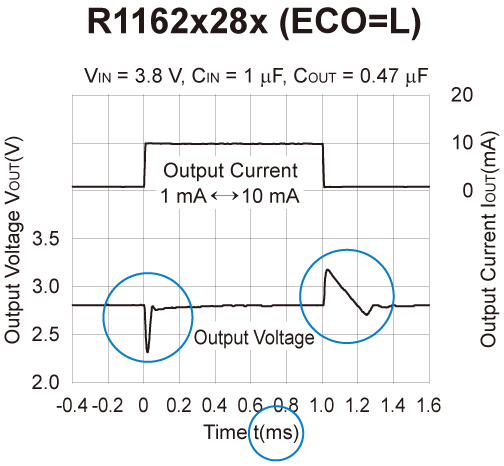
ECO Function Included
Low Power Mode -
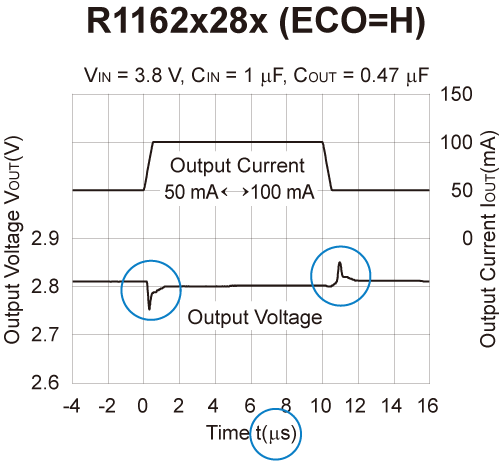
ECO Function Included
Fast Response Mode -
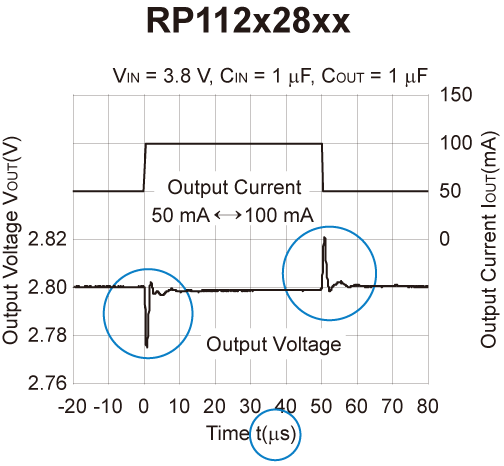
High-performance Type
How to Switch the ECO Function
There are four methods of switching the ECO Function, and Nisshinbo Micro Device offers four types of products utilizing each method.
-
[1] Manual Mode Shift Type (with ECO pin)
The mode is switched by controlling H/L to the ECO pin.
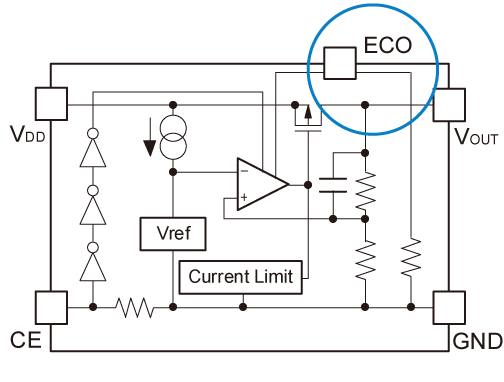
-
[2] Automatic Mode Shift Type
Switching occurs between low power mode and fast response mode depending on system load (output current).
The switching point is fixed in the IC.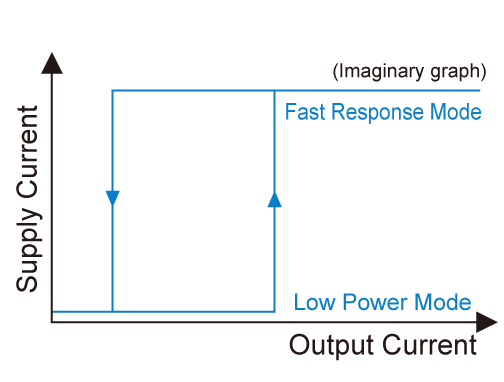
-
[3] Seamless Type
Instead of switching between two modes, a transition is made between modes depending on the output current.
The supply current smoothly decreases as the system load (output current) decreases.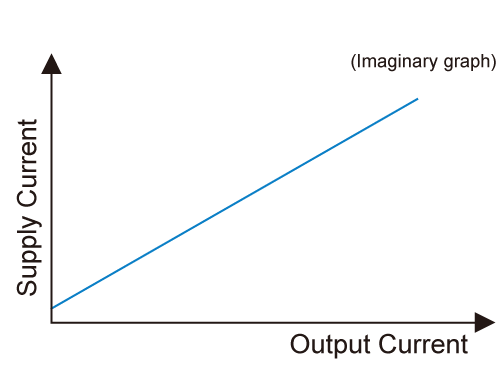
[4] Manual/Automatic Mode Shift Type
Fast response mode and Automatic mode shift can be switched by controlling H/L to the AE pin. When AE="H", the mode is set to the fast response mode, and when AE = "L", the LDO regulator operates like the Automatic Mode Shift Type. This type has both advantage of the Manual Mode Shift Type and the Automatic Mode Shift Type.
Related Products
If you still have questions.
-
Search Other FAQs
-
Enter your question via our web form.








